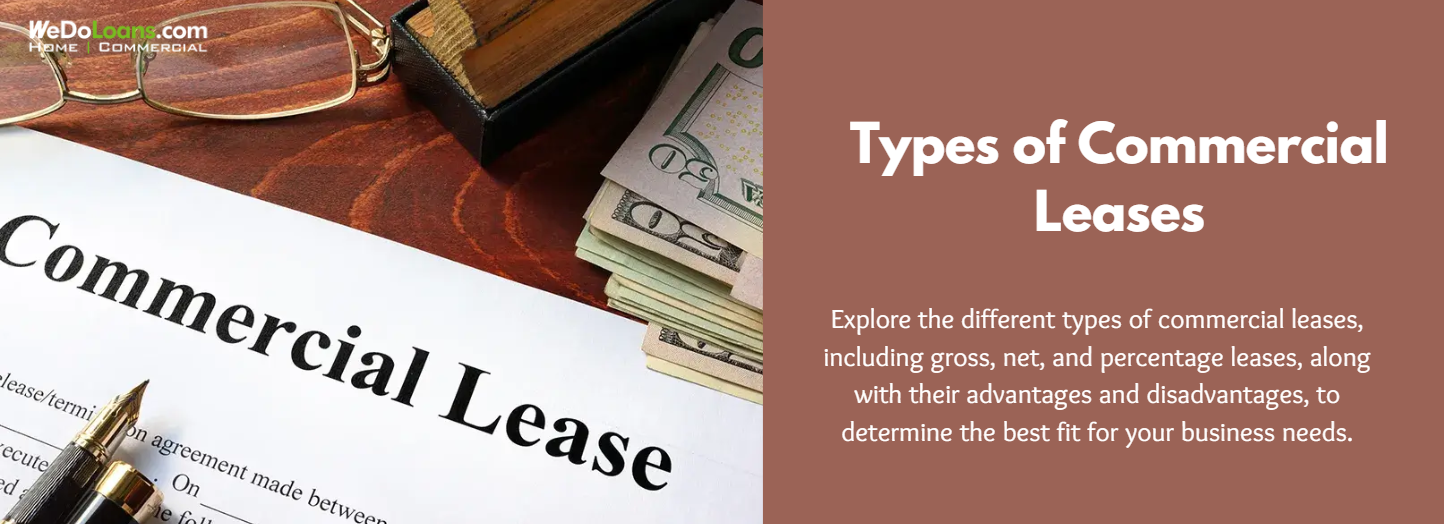
Real estate investors often rely on commercial leases to formalize agreements with tenants. Understanding the various lease types is crucial for achieving optimal financial outcomes and long-term success.
Overview of Commercial Leases
While commercial leases may seem similar to residential leases, they differ significantly in complexity and structure. A well-negotiated lease ensures that both tenant and property owner benefit, but this requires familiarity with the different lease options available.
Types of Commercial Real Estate Leases
- Gross Lease
A gross lease involves a fixed rental amount that typically includes certain expenses like insurance, taxes, and maintenance. The landlord may pay some utilities, but agreements vary.
-
- Modified Gross Lease: The landlord covers some costs, while the tenant assumes responsibility for specific utilities.
- Full-Service Lease: The landlord covers all property-related expenses.
Pros:
-
- Predictable income for landlords.
- Simple terms for tenants.
Cons:
-
- May limit rental rate increases over time.
- Higher costs for tenants in full-service arrangements.
- Net Lease
In a net lease, tenants pay a base rent and additional expenses like property taxes, maintenance, or insurance.
Types of Net Leases:
-
- Single Net Lease: The tenant covers one expense category (e.g., taxes).
- Double Net Lease: Two expense categories are tenant responsibilities.
- Triple Net Lease: Tenants cover all major operating expenses.
Pros:
-
- Reduces landlord responsibilities.
- Clear cost distribution.
Cons:
-
- Can deter tenants due to added responsibilities.
- Limits landlord control over property maintenance.
3. Percentage Lease
A percentage lease combines a base rent with a percentage of the tenant’s profits. This structure is common in retail spaces.
Pros:
-
- Attracts tenants in competitive markets.
- Landlords share in tenant success.
Cons:
-
- Dependent on tenant profitability.
- Risks underperforming tenants.
- Variable Lease
Variable leases adapt to market changes and tenant needs.
Types of Variable Leases:
-
- Index Lease: Rent adjusts based on an external index, like the Consumer Price Index.
- Graduated Lease: Rent increases at predetermined intervals.
Pros:
-
- Flexible for evolving markets.
- Attracts tenants with initial lower rates.
Cons:
-
- Risks losing tenants during adjustment periods.
- May complicate budgeting for tenants and landlords.
Key Considerations for Selecting a Lease Type
- Financial goals and profitability.
- Market conditions and tenant demand.
- Anticipated changes in regional expenses and property values.
- Long-term desirability of the location.
- Level of property management involvement desired.
Conclusion
Choosing the right type of commercial lease is a balance between the property owner’s financial objectives and the tenant’s needs. Adapting to market dynamics and maintaining flexibility can enhance lease agreements, ensuring mutual benefits for both parties.
